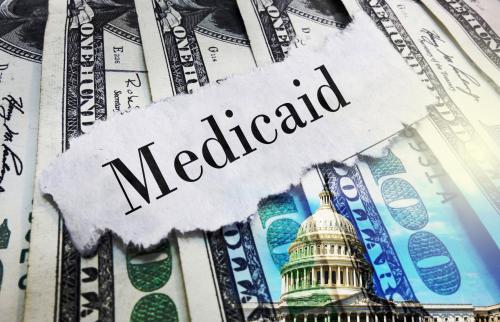The current low level of interest rates poses a big challenge to pension plans with benefits guaranteed by their corporate sponsors. These pension plans have a difficult time earning a decent return from high-quality bonds with relatively low risk.
In response, Congress has recently revised the rules for calculating the obligations of corporate pension plans. But these revised rules allow corporate pension plans to assume that they will earn unrealistically high returns. As a result, many corporate sponsors will not contribute enough to meet their likely benefit obligations to retirees.
The key to calculating a pension plan’s obligations is the “discount rate.” Actuaries estimate a plan’s long-term benefit obligations by studying its benefit schedule and projecting the life span of its workforce. Then they reduce this amount by the discount rate — the returns that the plan can reliably earn on its investments from the present to the times at which it must pay out benefits to retirees.
Therefore, the lower the discount rate, the higher the plan’s estimated obligations. The higher the discount rate, the lower the plan’s estimated obligations. If a plan’s estimated obligations exceed its assets on hand, the plan’s corporate sponsor must make contributions to the plan.
In the past, the accounting regulator required corporate pension plans to utilize a discount rate based on the two-year average of interest rates on top-quality bonds. In July, however, Congress passed legislation allowing corporate pension plans to use a discount rate based on average interest rates over the last 25 years. Since interest rates were quite high during the 1980’s, the discount rate for most plans will increase by over one percentage point.
Although a one percentage point increase in the discount rate may seem like a technical matter, the change will lead to much lower required contributions by companies with substantially underfunded pension plans. For example, the required 2013 pension contribution for UPS will drop from $1.62 billion to $47 million, according to David Zion at Credit Suisse. Similarly, he calculates that the required 2013 pension contribution by Lockheed Martin will drop from $2.35 billion to $1.4 billion.
Fortunately, the legislation effectively phases out by 2016 – by then, the discount rate will likely revert to the two-year average for top-quality bonds. But I have a sneaking suspicion that if interest rates are still very low in 2016, corporate sponsors of pension plans will again lobby Congress for a higher discount rate.
Another positive aspect of the legislation is that it raises insurance premiums paid by corporate sponsors to the Pension Benefit Guaranty Corporation (PBGC) — a government entity that guarantees up to $56,000 per year in benefits for participants in bankrupt companies with underfunded plans. In 2011, the PBGC reported a deficit of $26 billion. The new legislation would increase premiums paid to the PBGC by $9.6 billion over the next decade.
Unfortunately, the combined effect of both aspects of the new legislation is to penalize corporations that have well-funded pension plans at the expense of corporations whose pension plans are severely underfunded. The former corporations will have to pay higher PBGC premiums although the chances of their using PBGC insurance are minimal. The latter corporations will be able to make much lower contributions to their pension plans although they present a significant default risk to the PBGC.
The supporters of this legislation argued that current interest rates are “artificially” low because of policy actions taken by the Federal Reserve under Chairman Bernanke. While there is some validity to this argument, the average interest rate over the last 25 years is a poor indicator of low-risk returns in corporate bonds over the next decade. During the 1980s, the Federal Reserve under Chairman Volcker “artificially” kept interest rates high.
What is the correct “discount rate” that should be used to estimate the long-term obligations of a pension plan?
The answer depends on the timing of its obligations to pay retirement benefits, as under current accounting rules. Consider a pension plan that must pay out 20% of its benefits over the next 2 years, 50% around 10 years from the present, and 30% around 20 years from the present. The discount rate of such a plan should be divided into 3 parts — with 20% discounted at the interest rate on two-year bonds, 50% at the interest rate on 10-year bonds and 30% at the interest rate on 20-year bonds.
In my view, pension plans should look to the average interest rate over the last five years in determining these discount rates. To illustrate, for the discount rate on 10-year benefit obligations, corporations would use the average interest rate during the last five years on AA-rated corporate bonds with maturities of 10 years. This approach would represent a simple and more accurate way of choosing discount rates, though far from perfect.
In short, the new legislation temporarily reduces the contributions by corporations with substantially underfunded pension plans by using an unrealistically high discount rate. However, this legislation will not improve the financial condition of these plans; in a few years, the corporate sponsors of these plans will have to make even higher contributions to their underfunded plans.
The Brookings Institution is committed to quality, independence, and impact.
We are supported by a diverse array of funders. In line with our values and policies, each Brookings publication represents the sole views of its author(s).



Commentary
Op-edThe Underfunding of Corporate Pension Plans
September 4, 2012